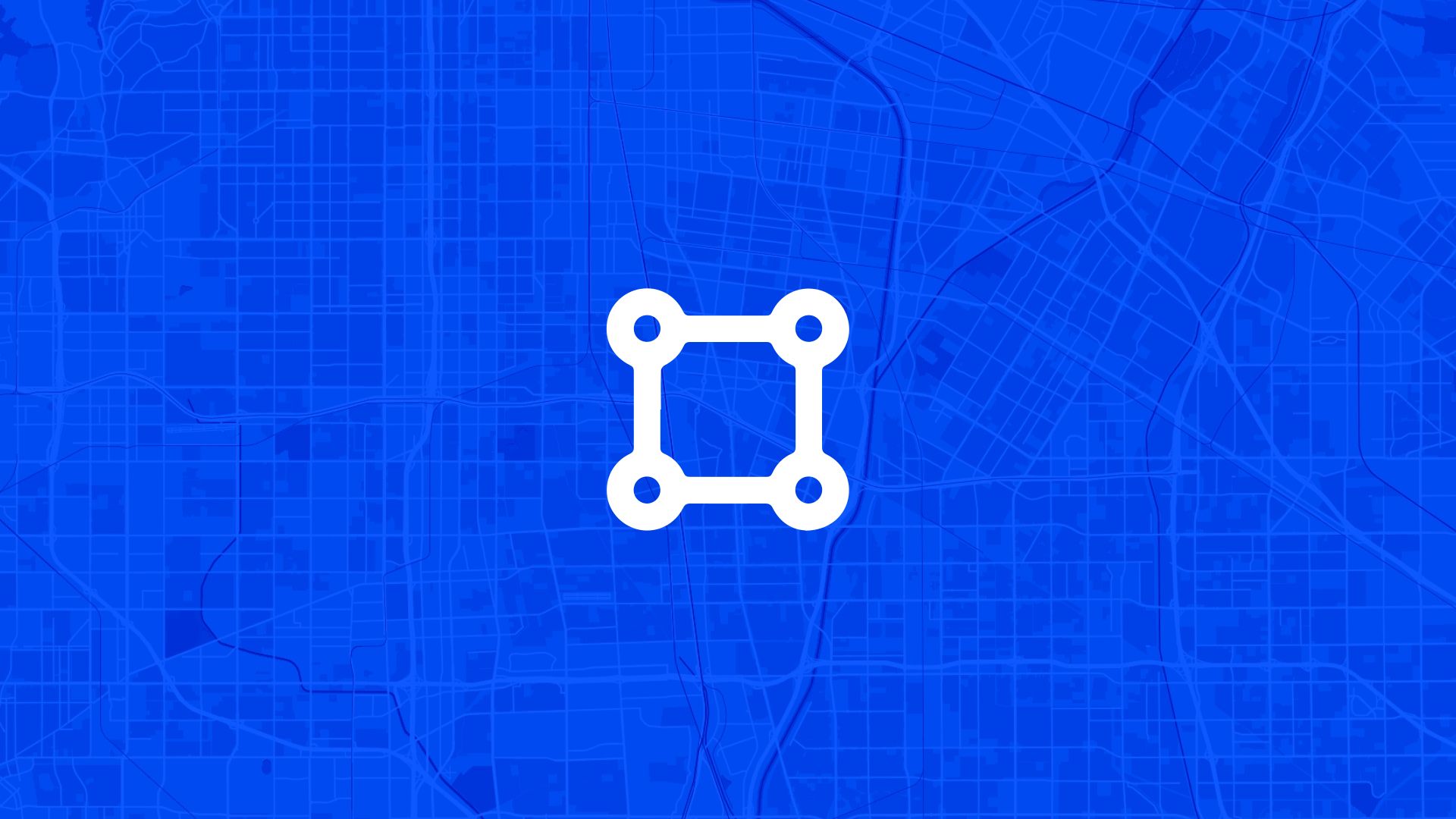The most effective market expansion strategy combines comprehensive competitor location analysis with demographic mapping to reveal exactly which geographic areas lack adequate retail coverage, minimize competitive pressure, and maximize market opportunity through strategic underserved area identification.
If your expansion planning relies only on general market research, basic competitor counts, or geographic analysis that lacks detailed competitor coverage patterns and demographic assessment, you're missing the market intelligence that determines expansion success, customer acquisition potential, and competitive positioning. That's why experienced retail strategists ask: can we map underserved areas by competitor store locations to identify market gaps with optimal customer potential, evaluate competitive density patterns, and discover expansion opportunities based on comprehensive competitor location analysis and demographic market intelligence?
With Atlas, you can create comprehensive market gap analysis that combines competitor location data with demographic intelligence for actionable customer discovery decisions. No complex market research software, no uncertainty about competitive coverage, no barriers to understanding underserved market opportunities. Everything starts with clear geographic visualization and meaningful competitive assessment.
Here's how to set it up step by step.
Why Mapping Underserved Areas by Competitor Store Locations Matters for Retail Customer Discovery
Creating comprehensive competitor location and market gap analysis enables better expansion targeting and more effective customer acquisition across underserved retail markets.
So mapping underserved areas by competitor store locations isn't just convenient geographic visualization—it's essential market intelligence that transforms competitor data into strategic expansion insights for successful customer discovery.
Step 1: Set Up Comprehensive Competitor Data and Market Intelligence Integration
Atlas makes it easy to create detailed customer discovery analysis with comprehensive competitor and demographic evaluation:
- Upload competitor location data including store addresses, retail formats, service areas, and coverage zones organized by geographic regions for market gap analysis and expansion targeting
- Add demographic context information showing population density, income levels, consumer characteristics, and market potential that correlate with underserved area opportunities
- Import market characteristics data connecting shopping patterns, retail demand, customer preferences, and consumer behavior that drive market potential within underserved geographic areas
- Include accessibility context showing transportation networks, traffic patterns, and customer access factors that affect retail success and market viability within underserved areas
Once configured, your competitor analysis provides the geographic foundation for comprehensive market gap discovery and expansion optimization.
Step 2: Create Underserved Area and Competitive Coverage Visualization
Next, build expansion visualization that reveals market gaps and competitive opportunities across geographic markets:
You can display different market analysis approaches:
- Coverage gap mapping showing areas with minimal competitor presence alongside demographic indicators that reveal optimal expansion markets and underserved customer concentrations
- Competitive density analysis displaying competitor concentration levels, market saturation patterns, and service gaps within different geographic areas for strategic positioning evaluation
- Customer-to-competitor ratios revealing market areas with high customer potential relative to existing retail coverage that support expansion strategies and market penetration opportunities
- Combined demographic-competitive scoring integrating competitor coverage with customer characteristics to identify markets with optimal combinations of underserved potential and target customer fit
- Drive-time accessibility analysis showing customer access to existing competitors and identifying areas where new locations could capture underserved market share
- Market expansion readiness assessment mapping underserved areas with optimal demographic characteristics, limited competitive pressure, and market conditions for successful retail expansion
Each visualization approach reveals market characteristics that inform expansion strategy decisions, customer targeting, and competitive positioning planning.
Step 3: Analyze Market Gaps and Expansion Opportunities
To extract customer discovery insights from competitor location and market gap analysis:
- Identify optimal expansion markets discovering underserved areas with superior customer potential, limited competitive coverage, and market conditions that support successful retail expansion
- Evaluate competitive positioning potential understanding market gaps, customer access patterns, and competitive weaknesses that enable effective market entry and customer acquisition within underserved areas
- Assess expansion investment efficiency analyzing how underserved markets provide optimal return on expansion investment, customer acquisition costs, and market penetration potential
- Compare market scenarios evaluating competitive density, customer characteristics, and market factors across different underserved areas to optimize expansion strategy and location prioritization
- Discover market timing opportunities using competitive analysis to identify underserved areas where market entry can establish competitive advantage and capture customer loyalty before competitors expand
Competitor location and market gap analysis reveals expansion opportunities and customer optimization strategies that maximize retail success and market penetration.
Step 4. Enable Expansion Team Coordination and Customer Discovery Assessment
To support retail operations and competitive-based customer discovery:
- Create expansion targeting dashboards providing development teams with comprehensive market gap analysis, competitive evaluation, and underserved market intelligence
- Set up site selection coordination tools helping expansion teams understand competitive coverage patterns, assess market opportunities, and coordinate location strategies based on underserved area analysis
- Add stakeholder communication enabling clear presentation of market potential, competitive insights, and expansion opportunities to executives and expansion stakeholders
- Include market development providing customer discovery analysis for expansion campaigns, market entry strategies, and competitive positioning programs based on underserved area targeting
- Configure performance management using competitive data to support expansion performance tracking, customer discovery optimization, and strategic market targeting across multiple underserved areas
Customer discovery intelligence becomes actionable across expansion teams, enabling coordinated market entry strategies and informed competitive positioning decisions.
Step 5: Optimize Expansion Strategy and Market-Driven Growth
To use competitor location analysis for strategic expansion customer discovery:
- Plan underserved market entry using competitive analysis to identify optimal expansion locations and coordinate market entry within areas lacking adequate retail coverage
- Optimize customer acquisition understanding market gaps and competitive patterns to maximize expansion effectiveness and minimize customer acquisition costs across underserved markets
- Coordinate competitive positioning using market analysis to plan expansion timing, competitive differentiation, and customer targeting strategies that leverage underserved market advantages
- Design market capture strategies analyzing competitive gaps and customer characteristics to plan marketing campaigns, service positioning, and customer experience that optimize underserved market penetration
- Plan market dominance understanding competitive trends and market evolution to design expansion strategies that establish market leadership and capture optimal underserved customer segments
Also read: Target High-Spend Postal Codes for New Product Launches
Step 6: Integrate Customer Discovery Analysis with Expansion Systems
Now that comprehensive competitor location and market gap analysis are complete:
- Export expansion intelligence for integration with site selection platforms, expansion analytics systems, and market development tools
- Create location support using competitive and market analysis to inform expansion campaigns, site targeting, and market entry strategies
- Set up expansion coordination providing discovery analysis for real estate development, location planning, and market expansion development within underserved areas
- Design performance management using customer analysis to support expansion performance tracking, customer discovery optimization, and strategic targeting across multiple underserved markets
- Generate growth intelligence supporting retail consulting, customer discovery analysis, and investment decisions with comprehensive competitor location and market gap evaluation
Your customer discovery analysis becomes part of comprehensive expansion development that creates better market outcomes through competitive intelligence and strategic underserved market targeting.
Use Cases
Mapping underserved areas by competitor store locations is useful for:
- Retail expansion managers identifying optimal market entry opportunities and evaluating customer potential based on comprehensive competitor coverage and demographic analysis
- Site selection teams evaluating expansion locations and planning market entry based on competitive gaps, customer access patterns, and underserved market intelligence
- Market researchers assessing customer discovery opportunities and planning expansion based on competitive insights, market characteristics, and underserved area identification
- Retail consultants evaluating expansion strategies and planning market penetration based on competitive analysis, customer targeting, and underserved market optimization
- Investment analysts supporting retail development with customer discovery analysis based on competitive performance, market potential, and expansion opportunities
It's essential for any retail expansion customer discovery where success depends on understanding competitive landscapes and making market-informed decisions about customer targeting and expansion strategy optimization.
Tips
- Consider market maturity analyzing not just competitor count but also market penetration, customer loyalty, and competitive strength that affect expansion success potential
- Evaluate customer mobility understanding how customers travel for shopping, brand preferences, and willingness to switch retailers when new options become available in underserved areas
- Include format considerations analyzing how different retail formats serve markets and identifying underserved areas that would benefit from specific store types or service models
- Plan for competitive response understanding how existing competitors might react to new market entry and developing strategies that maintain competitive advantage in underserved markets
- Combine with demographic trends analyzing how population growth, income changes, and demographic shifts will affect future market potential in currently underserved areas
Mapping underserved areas by competitor store locations in Atlas enables comprehensive customer discovery and evidence-based expansion strategy development.
No separate market research software needed. Just analyze competitive coverage and market characteristics geographically, evaluate customer opportunities, and discover the retail intelligence that optimizes expansion targeting and underserved market capture.
Customer Discovery with Atlas
Understanding your customers isn't just about demographics—it's about discovering who they are, where they are, and how to reach them effectively.
Atlas helps you turn customer data into actionable insights: one platform for customer analysis, segmentation, and strategic targeting.
Transform Customer Data into Strategic Intelligence
You can:
- Analyze customer demographics, behavior patterns, and geographic distribution that affect targeting effectiveness
- Evaluate multiple customer segments simultaneously and compare them based on value, engagement, and growth potential
- Identify optimal customer opportunities by combining demographic analysis with geographic insights and market intelligence
Also read: Map Foot Traffic by Store Location Using Census Layers
Build Customer Strategies That Drive Growth
Atlas lets you:
- Score and rank customer segments based on multiple criteria and business objectives
- Generate comprehensive customer profiles that support marketing decisions and strategic planning
- Export customer intelligence for integration with CRM systems, marketing platforms, and business development tools
That means no more guessing about customer preferences, and no more uncertainty about which segments offer the best growth potential.
Discover Better Customers Through Geographic Intelligence
Whether you're developing retail strategies, planning marketing campaigns, or building customer acquisition programs, Atlas helps you turn customer data into competitive advantage.
It's customer discovery—designed for geographic precision and strategic success.
Find Your Best Customers with the Right Tools
Customer discovery is complex, but customer intelligence can be simple. Whether you're analyzing competitive landscapes, evaluating market gaps, assessing expansion opportunities, or planning retail growth—understanding your customers matters.
Atlas gives you both precision and insight.
In this article, we covered how to map underserved areas by competitor store locations, but that's just one of many ways Atlas helps you discover customers.
From competitive analysis to market assessment, expansion evaluation, and growth planning, Atlas makes customer discovery accessible and actionable. All from your browser. No market research expertise needed.
So whether you're developing retail strategies or building any type of location-based business, Atlas helps you move from "searching for opportunities" to "targeting optimal markets" faster.
Sign up for free or book a walkthrough today.





